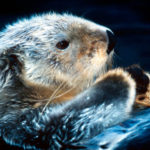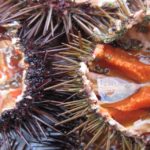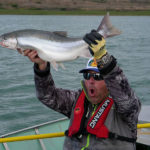Facts about otters
 Otter is another member of the family of cunies. You can meet it almost in any part of the world, it does not occur only on some islands, in Australia and Antarctica. Otter is a very intelligent animal, possessing many skills and abilities for survival in its habitat. To survive, animals have to learn a lot, and sometimes overcome long distances. Features of the structure of the body – this is one of the main weapons that help the otter survive. You will learn about these and other interesting facts about the otter in this article.
Otter is another member of the family of cunies. You can meet it almost in any part of the world, it does not occur only on some islands, in Australia and Antarctica. Otter is a very intelligent animal, possessing many skills and abilities for survival in its habitat. To survive, animals have to learn a lot, and sometimes overcome long distances. Features of the structure of the body – this is one of the main weapons that help the otter survive. You will learn about these and other interesting facts about the otter in this article.
- The density of otter fur is 110-125 thousand hairs per 1 cm². This density of wool does not allow the otters to get wet in the water.
- Otters dive well and can remain under water for up to 2 minutes.
- Otters live mainly in forest rivers and rarely occur in ponds or lakes.
- Their otters are built in thickets near rivers with inlets underwater.
- In winter, because of a lack of food, otters often wander, passing a day from 15 to 20 km in snow and ice.
- Otters are very interesting to move in winter on the slopes, descending from them on the belly and leaving behind a long strip in the form of a groove.
- The largest representative of the subfamily of the otters is the Brazilian otter, or as it is also called the giant otter.
- In a country like Bangladesh, otters are kept as hunting animals, they help fishermen to drive fish jambs on the net.
- Brazilian otters eat piranhas and young caimans.
- Since 2000, ordinary otters have been listed as a vulnerable species on the World Conservation Union list.
- Otters can lead both day and night life. For example, a giant otter is active in the daytime, and its European relative prefers nighttime hunting.
- On land, otters can reach speeds of up to 30 km per hour.
- The otters are well developed anal glands, with their help the animals mark their territory and report their strength from the invasion of strangers.
- Otters are well seen both on land and under water thanks to a mechanism that regulates the curvature of the crystal.
- To catch prey in muddy water, the otter uses vibrissa, touching everything that is near it.
- On the body of the otter, 800 million hairs grow.
- Otters can swim lying on the back to the top of the belly.
- Newborn babies begin to see only 30-35 days after birth.
- Nostrils and ears of otters are equipped with a special mechanism and close under water.
- The otter is so adventurous that sometimes it catches fish more than it can eat.



























